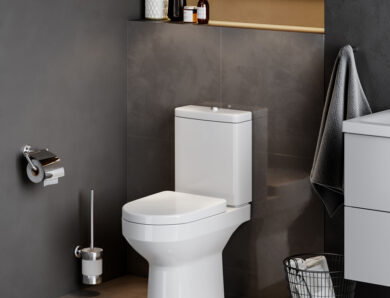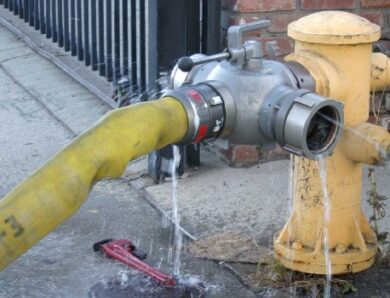How to choose a cutting wheel for a Bulgarian on metal, concrete, stone, tiles, plastic
The main tool for the Bulgarian is the cutting wheels. Not a secret, that the quality and speed of work directly depends on the correct selection of consumables. So, before you go buy a disc for the Bulgarian, it is recommended to get acquainted with the main types and characteristics of consumables.
Marking on cutting discs
In order for Bulgarian owners to be able to choose the right consumables in accordance with future work with this tool, manufacturers of cutting discs apply special markings on them.
abrasive discs
The following information can be gleaned from the label.
- Material, of which it is made ??nozzle, is indicated by the first letter: A is corundum, used for cutting metal; AS - electrocorundum (white), cuts stainless steel; C - silicon carbide, cuts stone and concrete well. Metal cannot be cut with this abrasive nozzle.
- Further, after the letter, denoting the material, there is a figure. She means, how many abrasive grains are per unit area. In accordance, the less grain, the greater the figure. If you need to cut steel, then choose a disk with grain smaller - 40 or 60. Coarse-grained discs are mainly used for cutting non-ferrous metals.
- The next parameter is the bond strength. Denoted by the letters of the Latin alphabet (H, I, J, K, L, M, N, THE, P, Q, R, S, T). The closer the letter is to the beginning of the alphabet, the softer the bond, and vice versa. For soft materials, the bond must be firm, and for strong and hard materials - soft.
- The last letters indicate the type of connection. Ceramic is marked with the letter V. Such disks have good water resistance, fire resistance and resistance to chemicals. The bakelite bond is denoted by the letter B. Such circles have good strength in bending and compression, but are destroyed when using a coolant with an alkaline environment. Bakelite-based bonds also have low heat resistance. At temperature 200 degrees it becomes brittle, and at high temperatures - begins to burn out. The third type of bond - bakelite with increased strength - is referred to as BF or BU.
- Maximum speed, which cannot be exceeded for a given consumable. The linear speed of an edge in m can be specified / with or in revolutions per minute.
- Dimensions of the circle in mm: outer diameter, thickness and diameter of the seat.
- Date of manufacture. Usually indicated on the metal insert, surrounding landing hole. It is forbidden to install an expired circle on a Bulgarian, as it may eventually lose strength and disintegrate during operation.
- The purpose of the nozzle. It is specified, for which materials the tool is intended for cutting.
- Color marking: blue is used to cut steel, for stone processing - green.
Color marking of diamond disks
Diamond wheels are marked with the following colors:
- orange - for cutting bricks;
- blue cuts concrete and marble well;
- green is used for cutting granite;
- gray tiles cut, granite and ceramics;
- yellow - alabaster and tile.
Varieties of cutting discs
Cutting wheels for angle grinders can be made of abrasive material, and all-metal. Depending on the type of material being processed, the type of a cutting disk is selected also.
on metal
If you need to cut metal, then always use consumables on a bakelite bond with reinforcements. At the same time there should be not less than 2 reinforcing grids.
Ordinary corundum is used for ferrous metals, that contains, in addition to alumina, chlorine impurities, iron and sulfur.
For cutting stainless steel, the presence of the above impurities in the cutting circle is unacceptable, because they cause scorching steel (overheating). As a result, alloy additives can burn out of stainless steel, and it turns into ordinary steel, as a result, the cut begins to rust. Therefore, it is important to carefully read the information on the disc before buying it. Stainless steel cutting disc is always marked with the letters "AS" and the word "INOX".
Discs with large abrasive particles are used for cutting non-ferrous metals. Example, cutting wheel for aluminum, in addition to a large abrasive, contains special fillers, which prevent clogging of the cutting edge.
Users of angle grinders are often asked questions: which metal cutting discs are best to use? The perfect disc for a Bulgarian woman should have:
- bakelite bond (THIS);
- correctly selected type of abrasive: for stainless steel white electrocorundum (AS), for ferrous metal - ordinary corundum;
- disk thickness from 1,6 to 2 mm;
- outer diameter 125 mm;
- fine fractional abrasive particles, if you need to cut steel structures.
It is not recommended to use abrasive wheels for cutting corrugated board, because the cut is overheated, and zinc burns out of it - the main element, which prevents corrosion. To reduce material overheating, some craftsmen use a circular metal disk for a Bulgarian with small teeth. But in both cases the place of a cut needs to be processed by special anticorrosive structure, which can be purchased at the store, where profiled metal sheets are sold.
For cutting stone
An abrasive disc is suitable for cutting stone at home, made of silicon carbide (marked with the letter C).
This cutting disc is used for small work on stone, because it wears out quickly. But, due to low cost, this consumable is quite popular with Bulgarian owners.
The stone abrasive disc is not suitable for professional use. For these purposes, it is recommended to choose an all-metal cutting wheel with diamond coating.
for concrete
Disks for cutting concrete and reinforced concrete are made of high-strength hardened steel, with application to the cutting part of the diamond crumb. Also, these cutting wheels can be segmented and integral.
Before cutting concrete, it is necessary to determine its type. It can be ordinary or reinforced (containing metal mesh). The age of the concrete should also be taken into account.
- Young concrete has abrasive properties, therefore wears out the tool quickly. For its cutting it is necessary to use diamond segmented disks on concrete of the increased thickness.
- Old concrete is a very hard material. For its processing it is better to apply a circle on the Bulgarian of moderate thickness.
A universal diamond wheel is installed for cutting reinforced concrete.
For cutting tiles and porcelain
It is best to use diamond-coated cutting edges to cut ceramic tiles. On such disks it is usually written "Wet cut". As practice shows, this tool does a great job, with a minimum of chips, cut on the tile even without the use of water, although a lot of fine dust is formed.
Solid diamond disk can also be used on porcelain.
By the way, this circle can be used not only for ceramics, but also for cutting thick glass.
Behind the tile, of course, you can use segmented (dry) and turbo drives, but the quality of the cut will be very low, because chips will inevitably form at its edges.
For cutting plastic
Plastic is well cut with ordinary abrasive tools on metal. But there is a special vigilant circle (three-toothed), designed for cutting wood, plywood and plastic. It can be used not only for cutting, but also for longitudinal cutting of the material, especially thick.
Installing this tool, it is important to correctly determine the direction of rotation of the Bulgarian spindle.
It is not recommended to use circular saws with many teeth on plastic and wood, due to the high probability of return of the tool, which can lead to injury.


